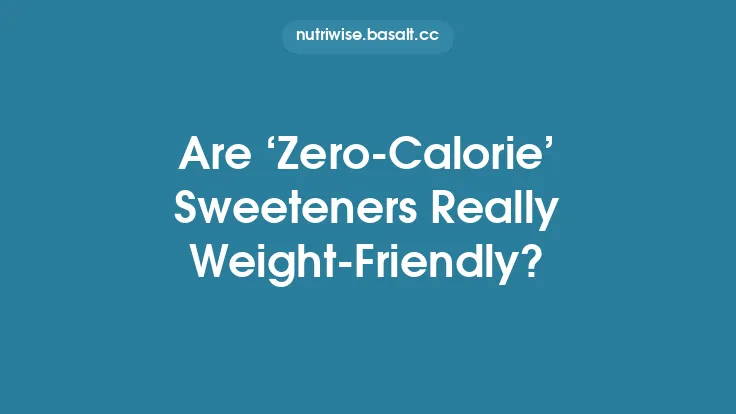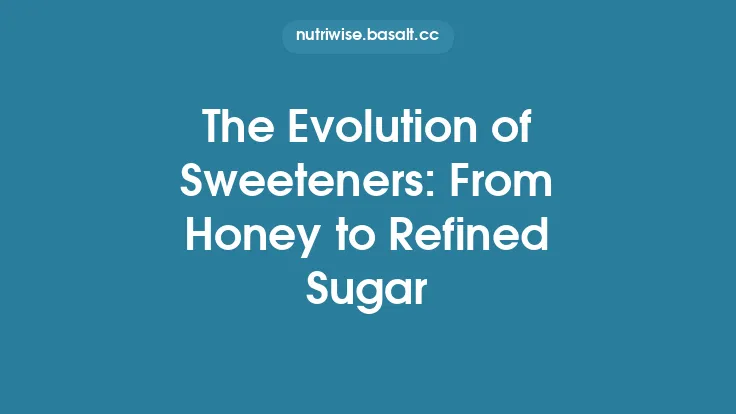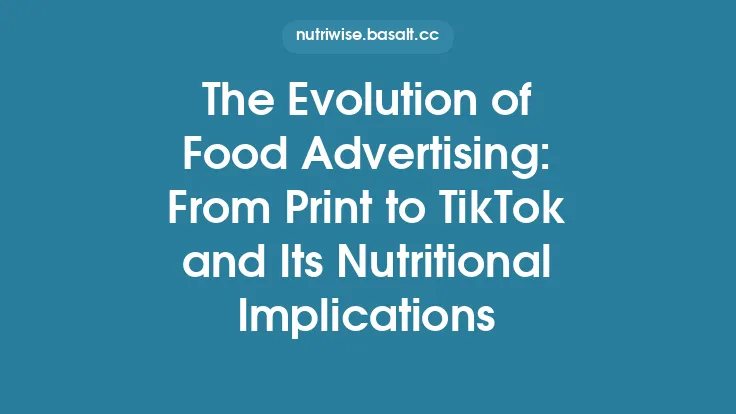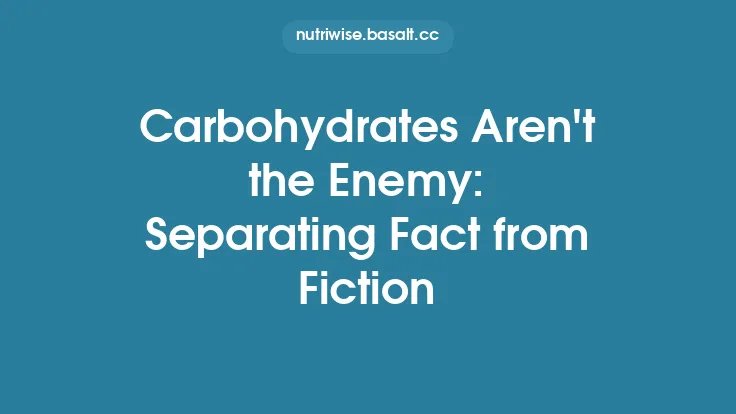Zero‑calorie sweeteners have become a staple on grocery shelves, diet menus, and fitness forums, promising the sweetness of sugar without the associated calories. Yet the phrase “zero‑calorie” can be misleading, and the science behind these compounds is more nuanced than the marketing suggests. Understanding how these sweeteners are defined, how they interact with our bodies, and what the research actually says can help consumers make informed choices beyond the hype.
What “Zero‑Calorie” Really Means on a Nutrition Label
In most regulatory frameworks, a product can be labeled “zero‑calorie” if it contains fewer than 5 kilocalories per serving. This threshold allows manufacturers to round down to zero on the nutrition facts panel, even when trace amounts of energy are present. The serving size is often set artificially low—sometimes a single packet or a few drops—so that the cumulative caloric contribution of a typical use can be higher than the label suggests.
Classification of Zero‑Calorie Sweeteners
Zero‑calorie sweeteners fall into two broad categories:
- Non‑nutritive sweeteners (NNS) – synthetic or naturally derived compounds that provide intense sweetness (hundreds to thousands of times sweeter than sucrose) with negligible caloric content because they are used in minuscule amounts. Examples include aspartame, sucralose, acesulfame‑K, neotame, and stevia glycosides (e.g., rebaudioside A).
- Sugar alcohols (polyols) – partially fermented carbohydrates that provide a modest amount of energy (typically 1.5–3 kcal/g) but are often labeled “zero‑calorie” when the serving size is small enough. Common polyols include erythritol, xylitol, and maltitol. Erythritol is unique among polyols because it is largely excreted unchanged in the urine, contributing virtually no metabolizable energy.
How Intensity of Sweetness Affects Caloric Calculations
Because NNS are many times sweeter than sugar, only a fraction of a gram is needed to achieve the desired sweetness. For instance, sucralose is about 600 times sweeter than sucrose; a typical 0.02 g serving provides the same sweetness as 12 g of sugar, yet the caloric contribution of that 0.02 g is effectively zero. This high potency is the cornerstone of the “zero‑calorie” claim.
Metabolic Fate of Popular Zero‑Calorie Sweeteners
| Sweetener | Chemical Nature | Absorption & Metabolism | Energy Yield |
|---|---|---|---|
| Aspartame | Dipeptide (phenylalanine + aspartic acid + methanol) | Hydrolyzed in the small intestine into its constituent amino acids and methanol; absorbed and metabolized like any other protein | ~4 kcal/g, but used at <0.02 g per serving → negligible |
| Sucralose | Chlorinated sucrose derivative | Poorly absorbed (~15%); the majority is excreted unchanged in feces; the absorbed fraction is metabolized minimally | ~0 kcal/g |
| Acesulfame‑K | Potassium salt of a sulfonamide | Rapidly absorbed, not metabolized, excreted unchanged in urine | 0 kcal/g |
| Stevia glycosides | Diterpene glycosides (e.g., rebaudioside A) | Hydrolyzed by gut bacteria to steviol, then absorbed and conjugated in the liver; excreted in urine | 0 kcal/g |
| Erythritol | Four‑carbon polyol | ~90% absorbed in the small intestine, excreted unchanged in urine; ~0.2 kcal/g (often rounded to zero) | ~0.2 kcal/g |
| Xylitol | Five‑carbon polyol | Partially absorbed; metabolized in the liver to glucose and glycogen; provides ~2.4 kcal/g | ~2.4 kcal/g (often labeled zero when serving size is tiny) |
Why the Body May Not Register “Zero” Calories
Even when a sweetener truly contributes no metabolizable energy, its presence can still influence physiological processes:
- Cephalic phase insulin response (CPIR): The taste of sweetness can trigger a modest insulin release in anticipation of glucose, even if no glucose follows. Studies show variable CPIR across different NNS, with sucralose and acesulfame‑K eliciting minimal responses, while aspartame may produce a slightly larger effect due to its amino acid components.
- Gut hormone modulation: Sweet taste receptors (T1R2/T1R3) are expressed throughout the gastrointestinal tract. Activation by NNS can affect the release of hormones such as GLP‑1 and PYY, which influence satiety and glucose homeostasis. The magnitude and clinical relevance of these effects remain an active research area.
- Microbiome interactions: Certain NNS (e.g., saccharin, sucralose) have been shown in animal models to alter gut microbial composition, potentially affecting metabolic health. However, human data are inconsistent, and the effects appear to be dose‑ and individual‑dependent.
Common Myths About Zero‑Calorie Sweeteners
| Myth | Reality |
|---|---|
| “Zero‑calorie sweeteners have no effect on blood sugar.” | While most NNS do not raise blood glucose directly, they can influence insulin dynamics and gut hormones, which may indirectly affect glycemic control in susceptible individuals. |
| “Because they’re ‘zero‑calorie,’ they’re automatically safe.” | Safety assessments are based on Acceptable Daily Intake (ADI) values derived from extensive toxicology studies. Consuming amounts well below the ADI is considered safe, but excessive intake (e.g., dozens of packets per day) can exceed the ADI and may cause gastrointestinal discomfort, especially with polyols. |
| “All zero‑calorie sweeteners taste exactly like sugar.” | Sweetness intensity, aftertaste, and flavor profile vary widely. Stevia glycosides can have a licorice‑like aftertaste, while sucralose is often described as more “sugar‑like.” |
| “Zero‑calorie sweeteners help with weight loss.” | Evidence is mixed. Some randomized trials show modest weight loss when NNS replace sugar in a calorie‑controlled diet, while others find no difference or even weight gain due to compensatory eating. The overall impact depends on overall dietary patterns, not the sweetener alone. |
Regulatory Landscape and the ADI Concept
Regulatory agencies (e.g., FDA, EFSA, JECFA) establish an Acceptable Daily Intake (ADI) for each NNS, expressed in milligrams per kilogram of body weight per day. The ADI is set at 1/100th of the No‑Observed‑Adverse‑Effect Level (NOAEL) from the most sensitive animal study, incorporating a large safety margin. For reference:
- Aspartame: ADI = 50 mg/kg bw (US), 40 mg/kg bw (EU)
- Sucralose: ADI = 15 mg/kg bw
- Acesulfame‑K: ADI = 15 mg/kg bw
- Stevia (rebaudioside A): ADI = 4 mg/kg bw (expressed as steviol equivalents)
A 70‑kg adult would need to consume dozens of cans of diet soda or hundreds of packets of tabletop sweetener daily to approach these limits, which is far beyond typical consumption patterns.
Practical Guidance for Consumers
- Read the serving size: A “zero‑calorie” claim may be based on a very small portion. Multiply the serving size by the number of servings you actually use to gauge true caloric impact.
- Consider your health goals: If you’re managing diabetes, most NNS are acceptable in moderation, but monitor blood glucose responses when trying a new sweetener.
- Watch for gastrointestinal tolerance: Polyols like erythritol are generally well tolerated, but larger doses can cause bloating or laxative effects, especially in sensitive individuals.
- Balance with whole foods: Replacing sugar with NNS can reduce caloric intake, but it should complement a diet rich in fruits, vegetables, whole grains, and lean proteins rather than serve as a “free pass” for unlimited sweet foods.
- Stay informed about emerging research: The field evolves rapidly, with ongoing studies on microbiome effects, long‑term metabolic outcomes, and potential interactions with medications.
The Bottom Line
Zero‑calorie sweeteners are a heterogeneous group of compounds that, by definition, contribute negligible energy when used in typical serving sizes. Their intense sweetness allows manufacturers to label products as “zero‑calorie,” but the reality is that trace calories may still be present, and physiological responses can extend beyond simple caloric accounting. Regulatory bodies have established generous safety margins, and normal consumption patterns fall well within these limits. However, individual responses—particularly regarding gut health, insulin dynamics, and satiety—can vary.
When used thoughtfully as part of a balanced diet, zero‑calorie sweeteners can be a useful tool for reducing added sugar intake. They are not a magic bullet for weight loss or metabolic health, and they should not replace whole, nutrient‑dense foods. Understanding the science behind the “zero‑calorie” claim empowers you to make choices that align with your personal health goals and dietary preferences.





